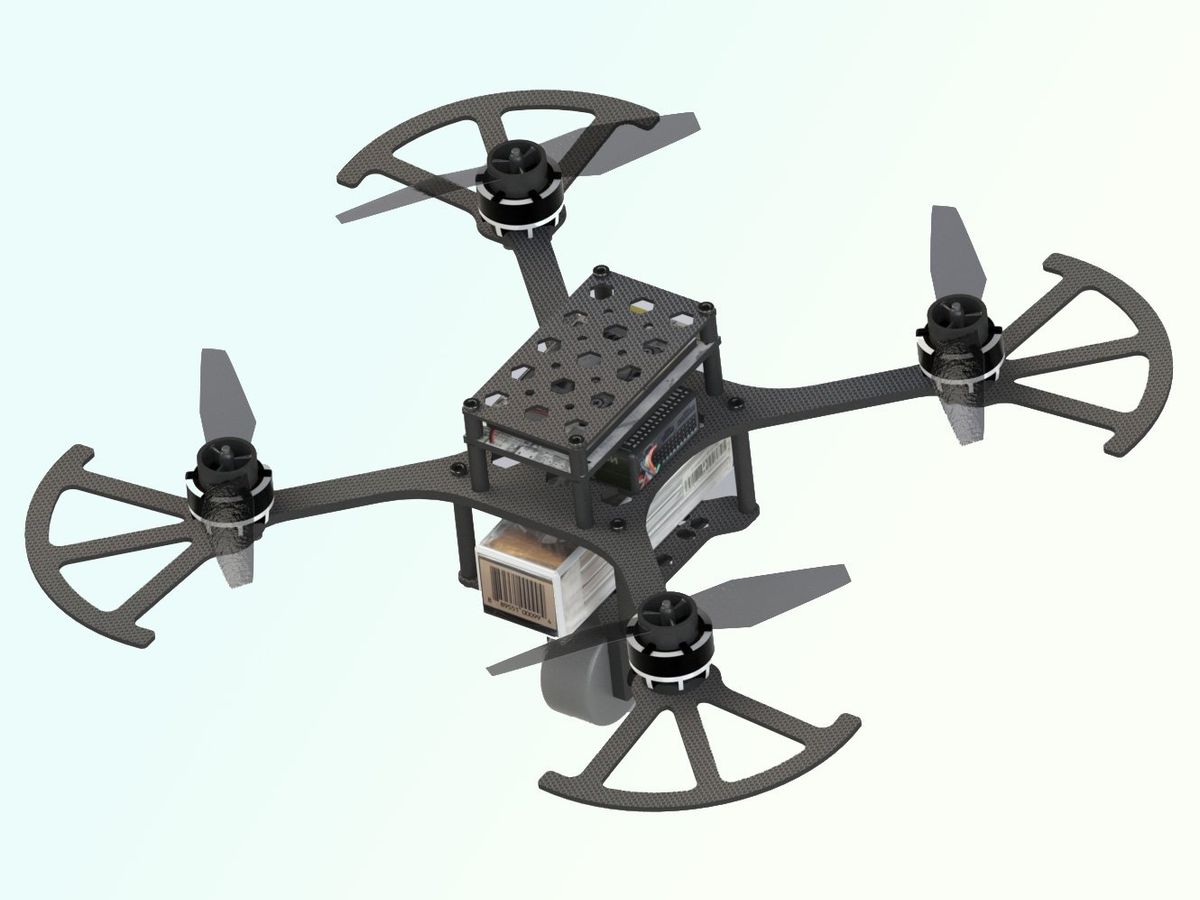This article is part of our exclusive IEEE Journal Watch series in partnership with IEEE Xplore.
A new air-ground vehicle, appropriately named Skywalker, is able to seamlessly transition between ground and air modes, outperforming competing air-ground vehicles in several key performance measures. Skywalker was put to the test in a series of experiments, which were described in a study published 14 March in IEEE Robotics and Automation Letters.
Airborne vehicles are undeniably convenient, offering great mobility, but they require significantly more energy than ground vehicles. Meanwhile, ground vehicles are typically slower and may encounter physical obstacles and barriers. Skywalker, the researchers say, offers the best of both worlds.
“We create this air-ground vehicle to take the complementary advantages of ground vehicles’ high power efficiency, while maintaining multicopters’ great mobility,” explains Fei Gao, an associate professor at Zhejiang University who was involved in the study. He notes that these features will help Skywalker work in large-scale environments and complete long-distance deliveries.
Skywalker is essentially a quadrotor copter consisting of four brushless motors, a Hobbywing, and propellers. For traveling on the ground, it has a single omnidirectional wheel that allows it to turn freely.
“Skywalker still needs to keep the propellers rotating to keep balance and tilt itself to move around. However, the rotating speed [of the propellers] can be significantly reduced compared with aerial locomotion, thus saving much energy,” explains Gao.
Gao’s team also developed a unified controller designed for both aerial and ground locomotion, so that Skywalker can conduct hybrid air-ground locomotion freely and at high speeds.
In their study, the researchers conducted four experiments to test Skywalker’s ground-trajectory tracking ability, hybrid-trajectory tracking ability, rotational ability (free yaw execution), and power efficiency.
The results show that Skywalker is able to reach a maximum velocity of 5 meters per second and can turn on a dime—thanks to its omnidirectional wheel and propellers. Whereas other air-ground vehicles can take from one to 20 seconds to transition between aerial and ground modes, Skywalker can complete the task seamlessly, the researchers say.
The team also assessed Skywalker’s energy efficiency. The researchers found that it uses 75 percent less energy by traversing the ground—while minimally using its propellers to guide and balance itself—compared to what it uses while flying.
“The uniqueness of Skywalker mainly lies in the simple mechanism, impressive trajectory-tracking ability, and free yaw execution ability,” says Gao.
Meet Skywalker: a vehicle that boh flies and driveswww.youtube.com
Gao says his team is interested in commercializing Skywalker, given its broad range of potential applications—for example, in photography, exploration, rescue, surveying, and mapping. Because of its endurance and ability to carry loads, Skywalker could be fitted with more batteries, onboard computers, and sensors to further broaden its applications, he says.
But while the vehicle is theoretically capable of going over difficult terrain, these added capabilities still must be put to the test.
“In this work, we make the assumption that the vehicle moves on flat ground, which limits its application in wild, complicated environments,” Gao says. “In the future, we aim to precisely model the dynamics of Skywalker on uneven ground and develop autonomous planning algorithms for outdoor application.”
- Every Quadrotor Needs This Amazing Failsafe Software ›
- Cutest Quadcopter Ever Sounds Like a Swarm of Angry Bees ›
Michelle Hampson is a freelance writer based in Halifax. She frequently contributes to Spectrum's Journal Watch coverage, which highlights newsworthy studies published in IEEE journals.



